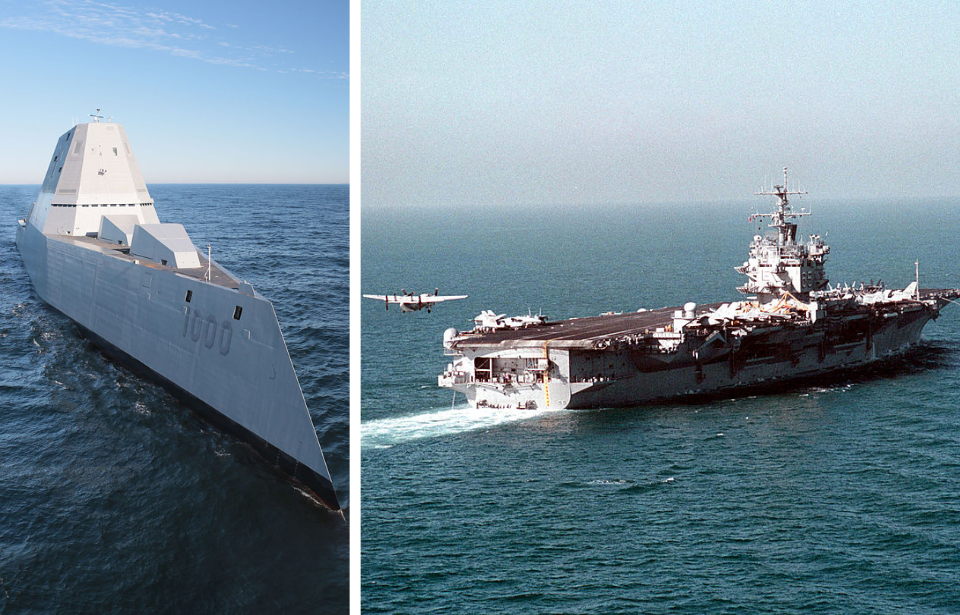From stealth to firepower and stamina, these floating technological marvels seemingly defy the laws of physics, and with a goal of creating a 350-ship fleet by 2034, new innovations will allow the United States to lead the next best generation of sea vessels into battle. Thanks to these seven massive warships, which are among the largest in the world, the US has built up the strongest Navy.
USS Zumwalt (DDG-1000)
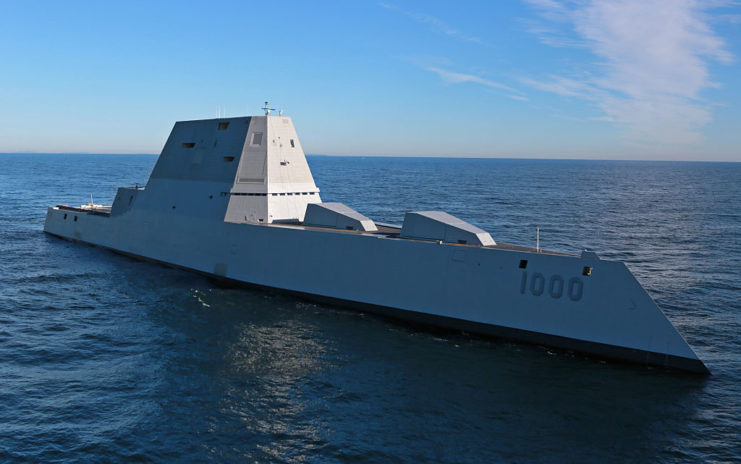
With a displacement of 15,656 long tons, the US Navy’s newest warship, the USS Zumwalt (DDG-1000), is the largest and most advanced American surface combatant in the world.
Zumwalt is the first in a new class of ships featuring a state-of-the-art electric propulsion system, innovative design and stealth capability. She’s the first Navy surface combatant to use the new Integrated Power System (IPS), which provides maximum propulsion while saving energy. This allows the vessel to allocate more resources toward high-energy weapons.
Zumwalt, a guided missile destroyer, features an innovative wave-piercing tumblehome hull, which reduces acoustic output, making her harder to detect by nearby enemy vessels. New radar systems and powerful long-range guns make the warship as stealthy as she is lethal.
Unlike other destroyers built for deep-water combat, Zumwalt is the first to be specially built to provide support to ground forces, on top of traditional roles in anti-air, -surface and -submarine warfare. The vessel is an entirely unique and modern approach to US naval design, and she’ll surely set a new standard around the world.
USS Enterprise (CVN-65)
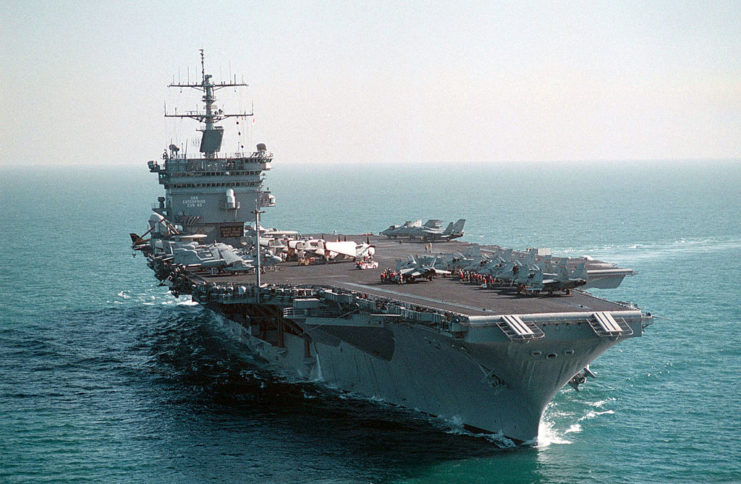
Not to be confused with Captain Kirk’s famous Starfleet ship, the USS Enterprise (CVN-65) was formerly the US Navy’s largest warship. At 1,123 feet in length, “Big E” is the longest naval vessel ever built, and was the first nuclear-powered ship in the American fleet.
Commissioned in 1961, Enterprise witnessed the tense unfolding of the Cuban Missile Crisis, before becoming the first nuclear-powered ship to engage in combat during the Vietnam War, operating primarily in the Gulf of Tonkin. She then took part in Operation Frequent Wind, the final phase of the evacuation of American citizens and “at-risk” Vietnamese civilians from Saigon, and continued to take part in military operations and exercises until her decommissioning in 2017.
Enterprise could hold up to 96 aircraft, and was armed with three RIM-7 Sea Sparrow launchers, three 20 mm Phalanx CIWS mounts and two RIM-116 Rolling Airframe Missile (RAM) launchers. Extremely high-tech for her time, the aircraft carrier cost over $450 million to build in 1958. While underway, she housed as many as 5,800 personnel and served over 20,000 meals each day.
Presently, this once-mighty ship is awaiting nuclear recycling.
Gerald R. Ford-class
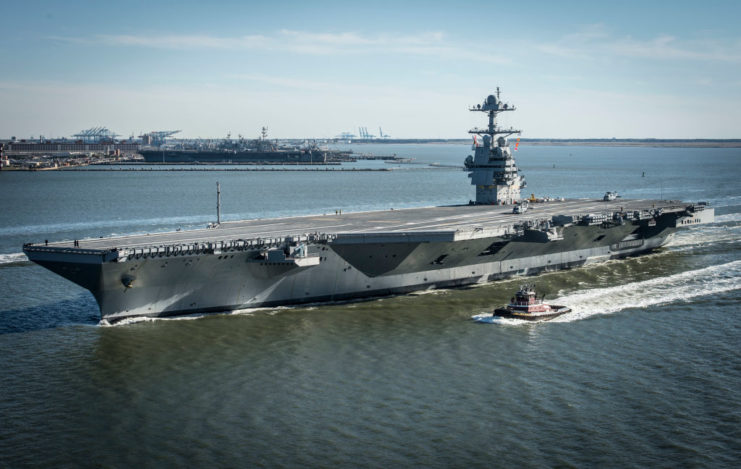
Commissioned in 2017, the Gerald R. Ford-class of nuclear-powered aircraft carriers is the first in 40 years. The US Navy plans to replace the older Nimitz-class with 10 of these “next generation” warships, each with a price tag of $13 billion. Currently, the USS Gerald R. Ford (CVN-78) and USS John F. Kennedy (CVN-79) are the only completed Gerald R. Ford-class carriers.
These technologically-advanced vessels prove they don’t need strength in numbers to conquer the sea. The Gerald R. Ford-class features several new developments that have changed aircraft carrier design for the better. The Electromagnetic Aircraft Launch System (EMALS) replaces the outdated steam catapults used to launch aircraft on older classes, and is more powerful, smaller and easier to control, while also reducing the stress put on an aircraft’s frame.
The Gerald R. Ford-class also includes the state-of-the-art Dual Band Radar (DBR) system, which allows operators to simultaneously use two electromagnetic frequency ranges. Previous radar used two systems to scan large areas and track a target, while DBR combines them into one.
Nimitz-class
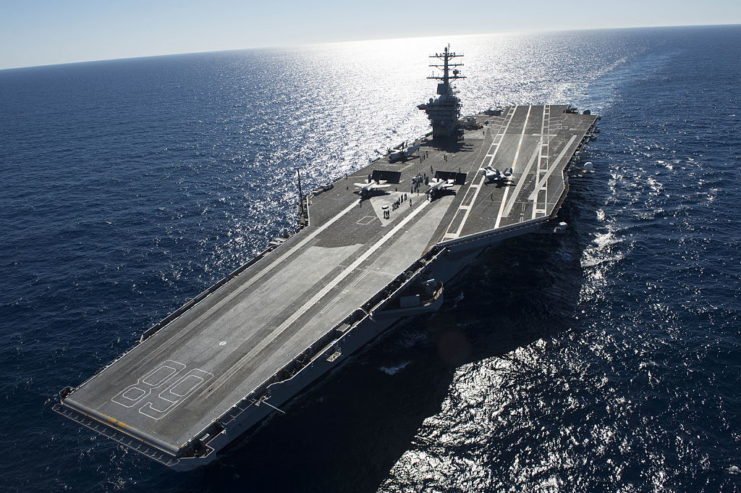
Nimitz-class aircraft carriers are still heavily relied upon during times of war. The class, named for Fleet Adm. Chester Nimitz, includes the former-largest warship ever built, with a displacement of 102,000 long tons and spanning over 1,000 feet. Featuring similar armaments to the Enterprise-class, Nimitz-class carriers are also equipped with Mk 38 25 mm Machine Gun Systems (MGS).
The USS Nimitz (CVN-68), commissioned in 1975, is currently the oldest ship in the US Navy’s fleet and the oldest-serving aircraft carrier in the world. The launching site for Operation Eagle Claw, the failed attempt by the US military to free those held captive during the Iran Hostage Crisis, Nimitz‘s service has included a deployment to the Persian Gulf following Operation Desert Storm and support roles in Iraq and Afghanistan.
Nimitz and her sister ships can carry 90 fixed-wing aircraft and helicopters at a time, while 64-mm Kevlar armor and as many as 16 missile launchers protect the hull from enemy fire both above or below the water.
Forrestal-class
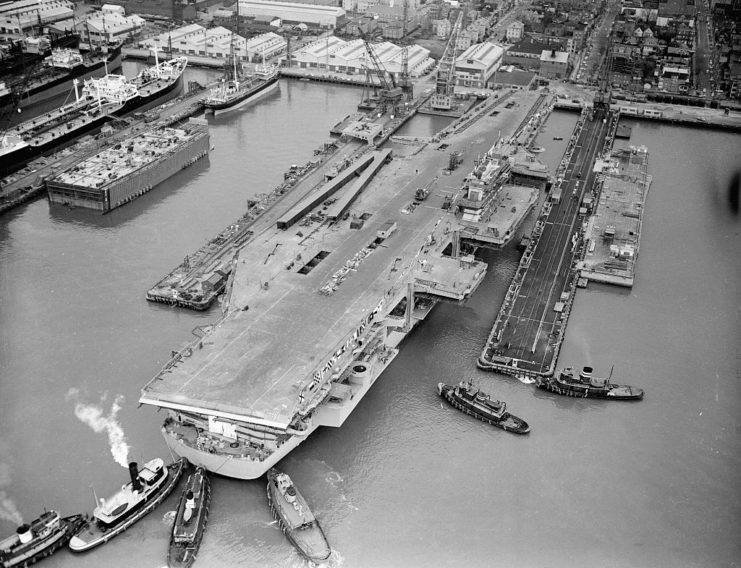
The Forrestal-class of aircraft carriers was introduced in the 1950s to replace the World War II-era Midway-class. The four ships each weighed 80,000 tons and measured 1,070 feet in length.
This new class of “supercarrier” was significantly larger than others, due to the US Navy’s belief that newer carriers should be able to carry the same number of aircraft as those that operated during WWII, even though new jet aircraft were larger and heavier. In August 1959, a 84,000-pound Douglas A-3D Skywarrior took off from the USS Forrestal (CV-59) – the heaviest to ever do so from an aircraft carrier.
All four Forrestal-class carriers saw action throughout the Cold War, before arriving in Vietnam. During this time, Forrestal suffered a devastating explosion while in the Gulf of Tonkin, which resulted in the deaths of 134 crewmen. This led the Navy to revise the fire training given to sailors and other personnel, and enact a number of improvements and regulations.
Later on, the carriers in the Forrestal-class were deployed in support of Operation Desert Storm.
Kitty Hawk-class
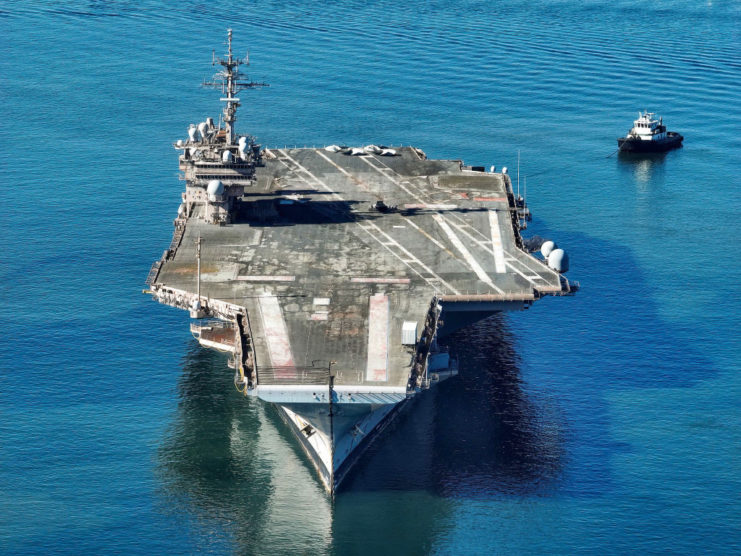
While slightly smaller than the Forrestal-class, the Kitty Hawk-class was designed to replace the former. Three aircraft carriers were completed in the 1960s, with a variant, the USS John F. Kennedy (CV-67), also being constructed. The latter incorporated the state-of-the-art underwater protection system originally designed for the US Navy’s nuclear carrier program.
The vessels were each fitted with an Anti-Submarine Classification and Analysis Center (ASCAC), Tactical Flag Command Center (TFCC), and Navigational Tactical Direction System (NTDS). Kitty Hawk-class ships also perfected the aircraft launch and recovery process, which was typically a risky operation prior to the 1960s.
All of the vessels in the class have since been decommissioned. The lead ship, the USS Kitty Hawk (CV-63), became the first aircraft carrier to be awarded the Presidential Unit Citation for her service during the Tet Offensive.
USS John F. Kennedy (CV-67)
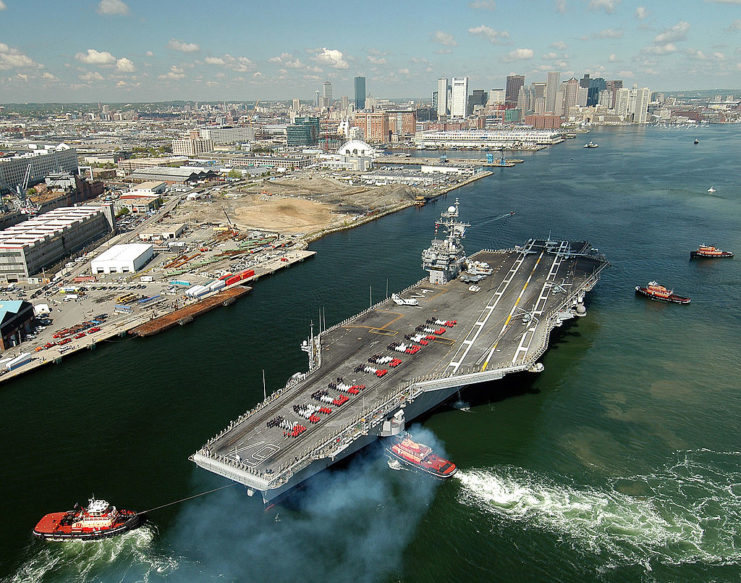
The USS John F. Kennedy was originally intended to be part of the Kitty Hawk-class, but received so many modifications that she became her own variant. John F. Kennedy was in service from 1968-2007, and was the last conventionally-powered carrier built by the US Navy.
During her 40 years of service, John F. Kennedy participated in 18 deployments, largely in the Mediterranean. Carrier Air Wing (CVW) 3, which operated from the carrier during the Gulf War, launched the very first operational strikes against Iraqi forces at the onset of Operation Desert Storm. During Operation Enduring Freedom, she spent four months in the North Arabian Sea as support for Carrier Air Wing (CVW) 7.
More from us: Polish Submarines Nicknamed the ‘Terrible Twins’ Struck Fear Into the German and Italian Navies
In 2015, a new USS John F. Kennedy (CVN-79), part of the Gerald R. Ford-class, became the second ship to bear the name of the slain US president when the vessel was laid down in Newport News, Virginia.
